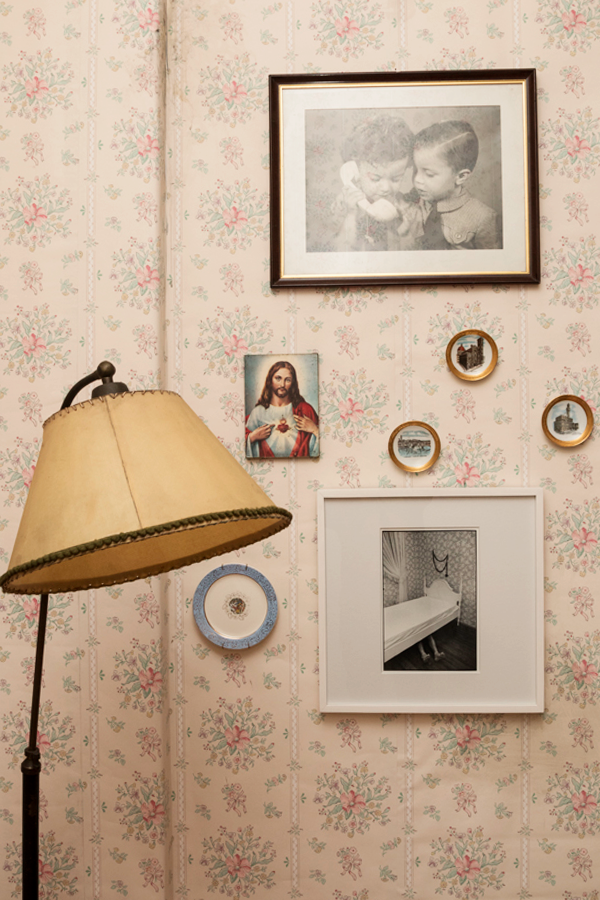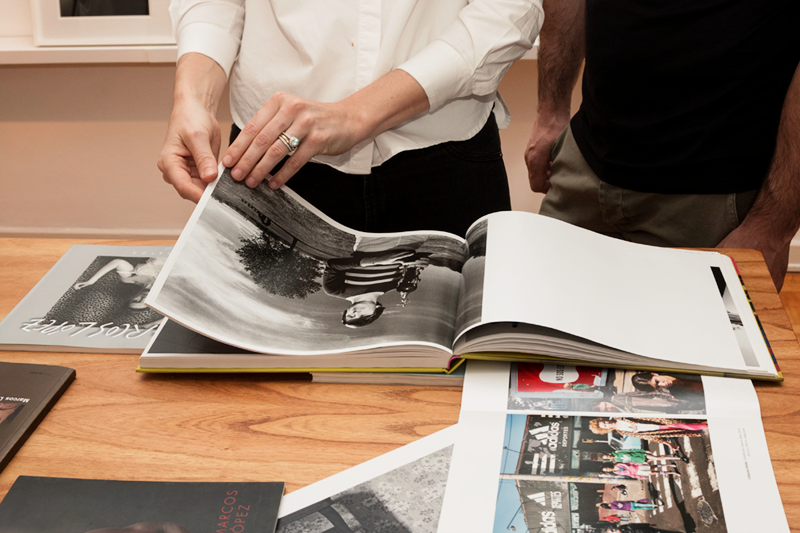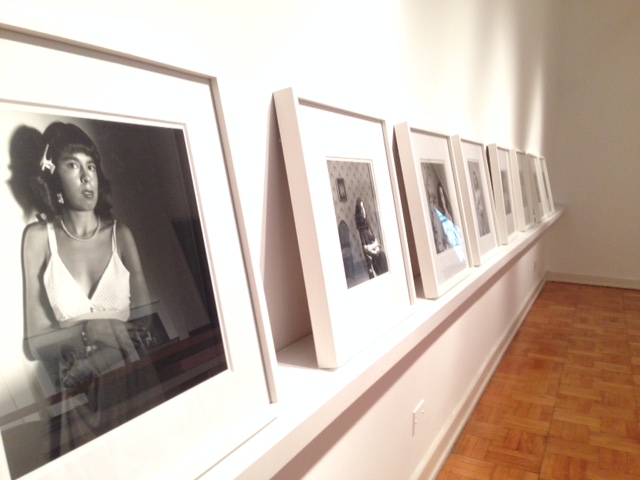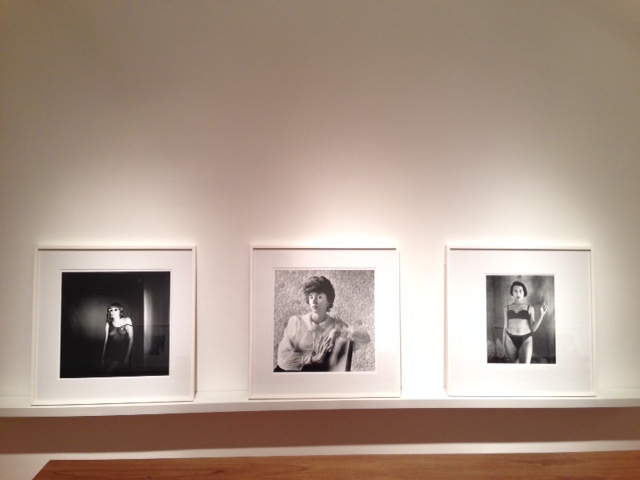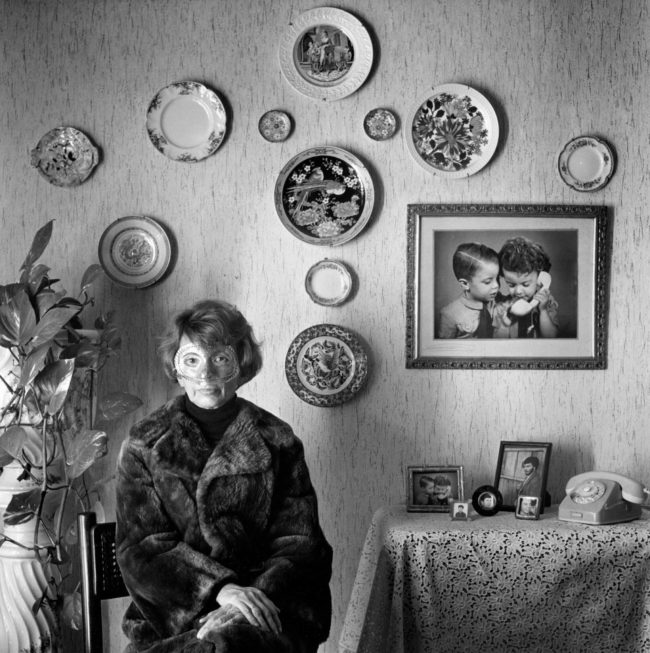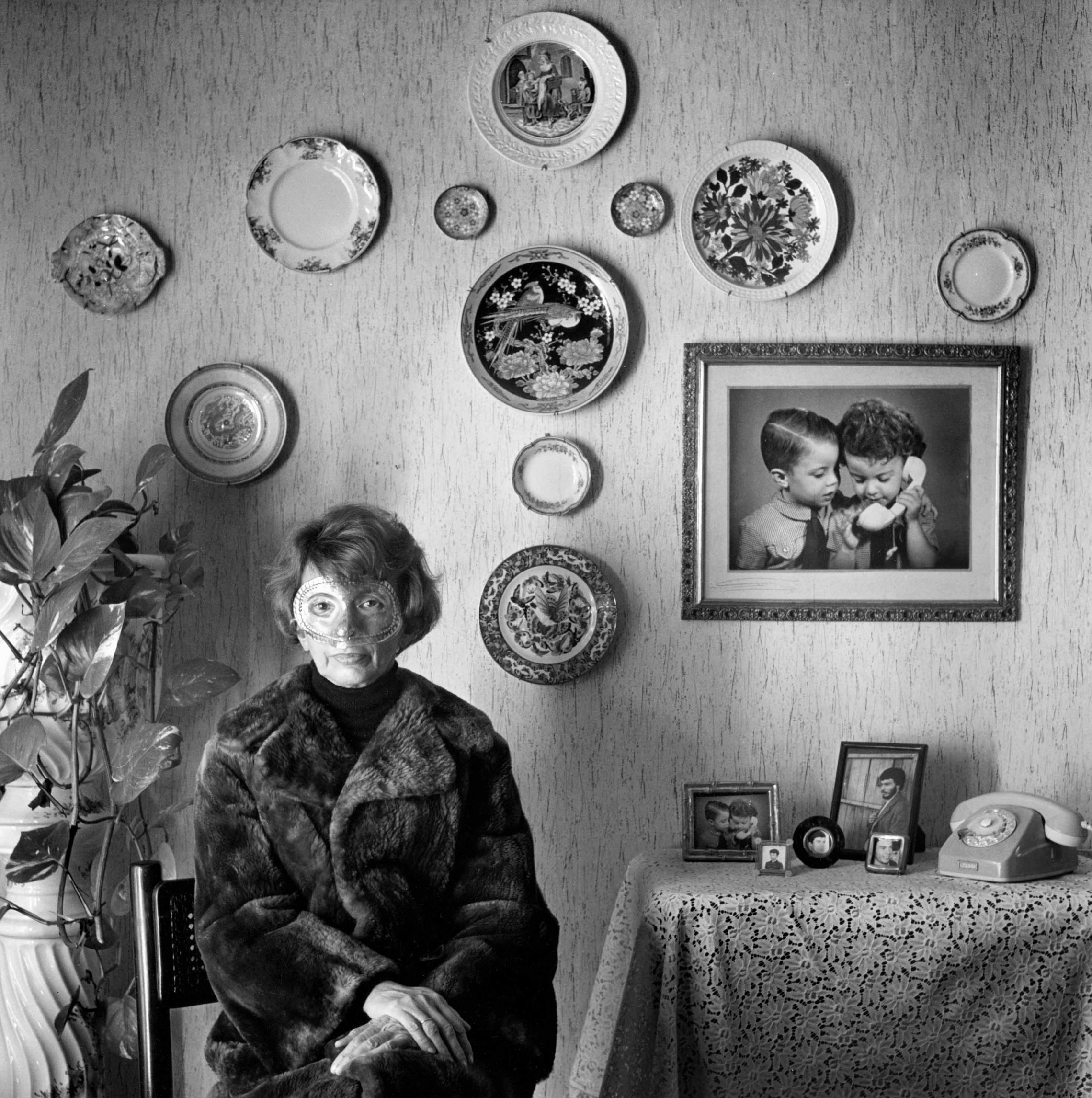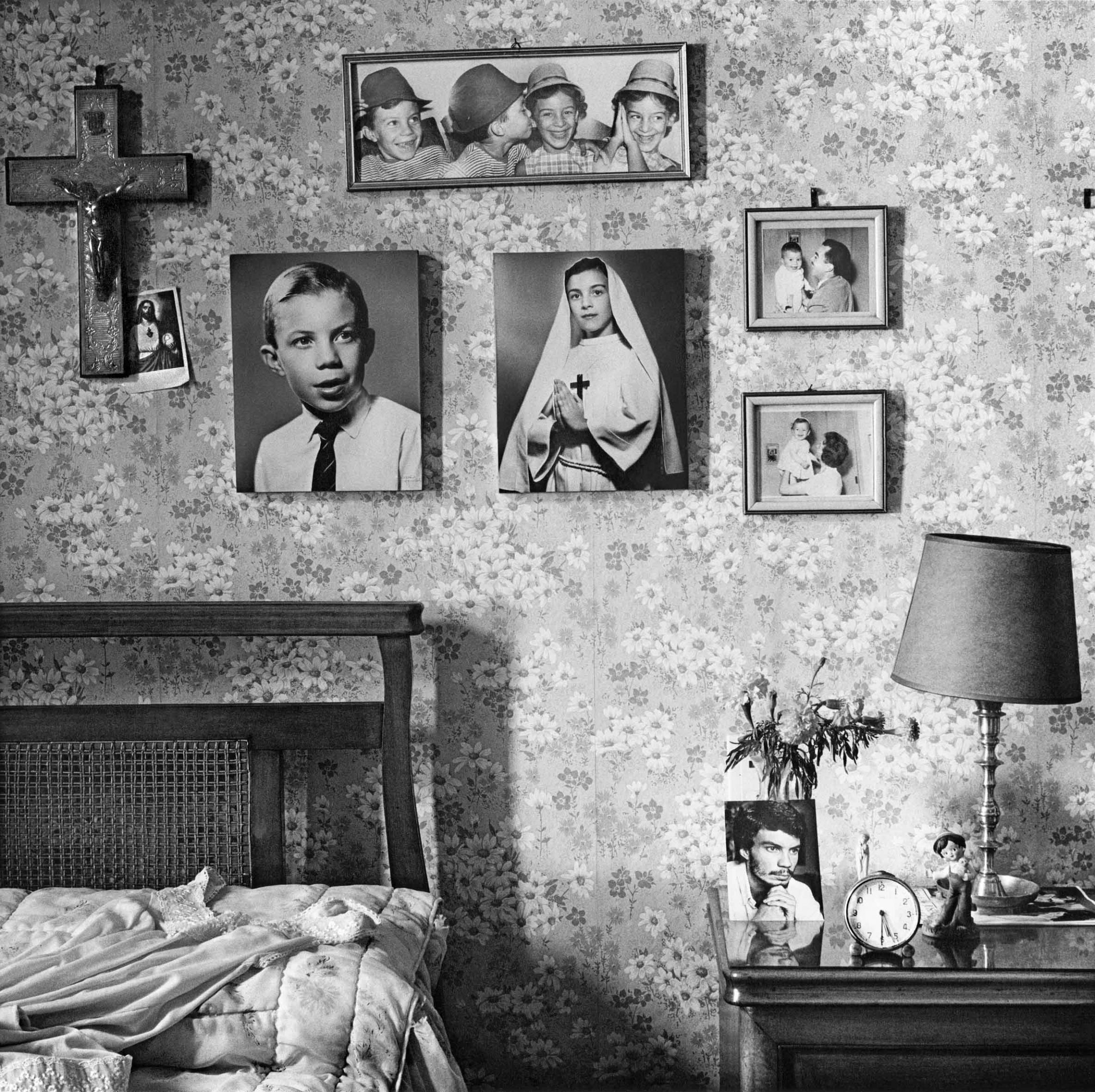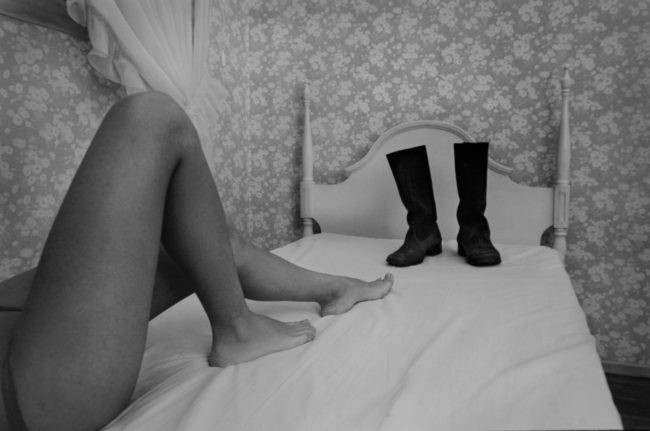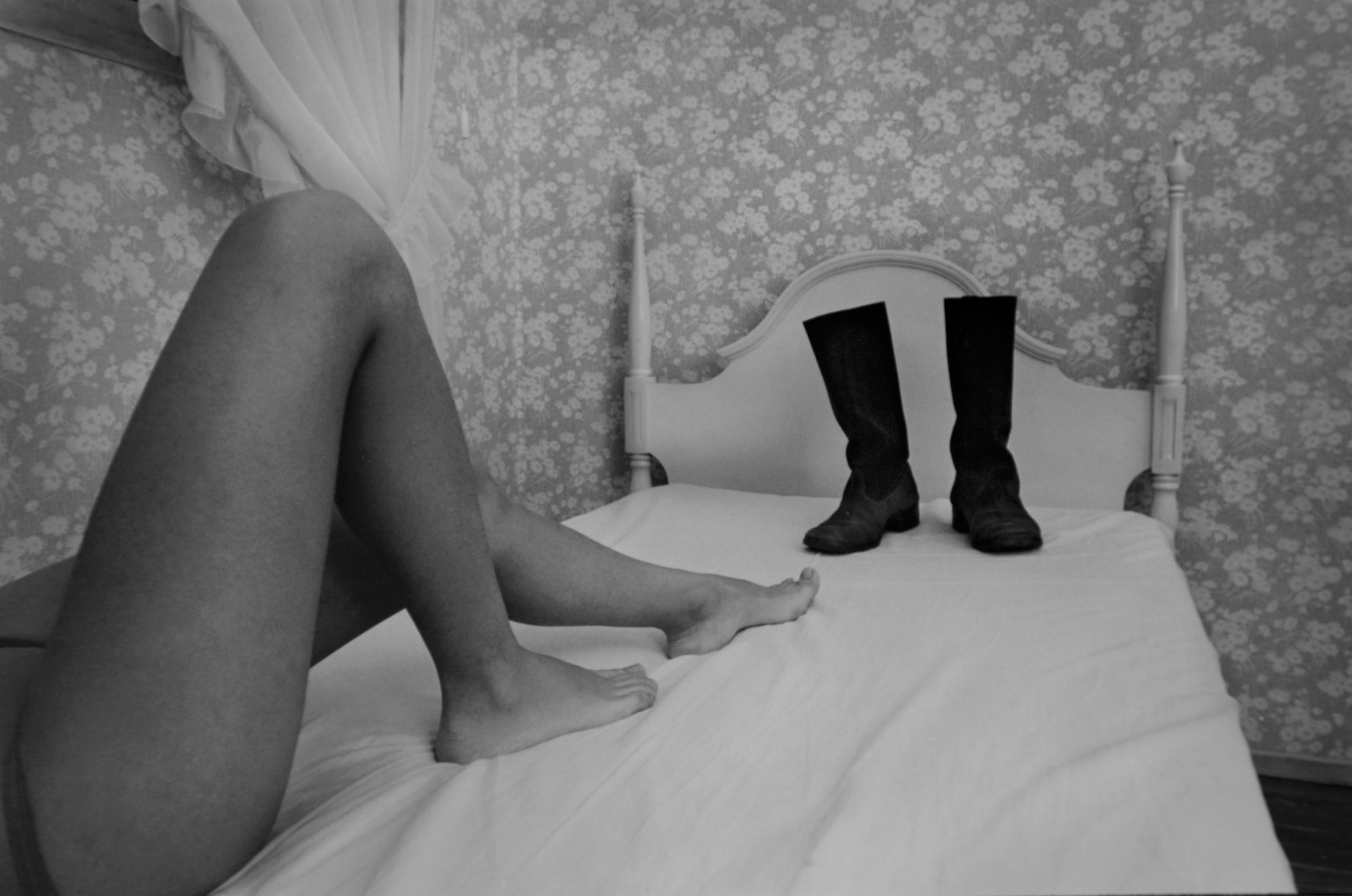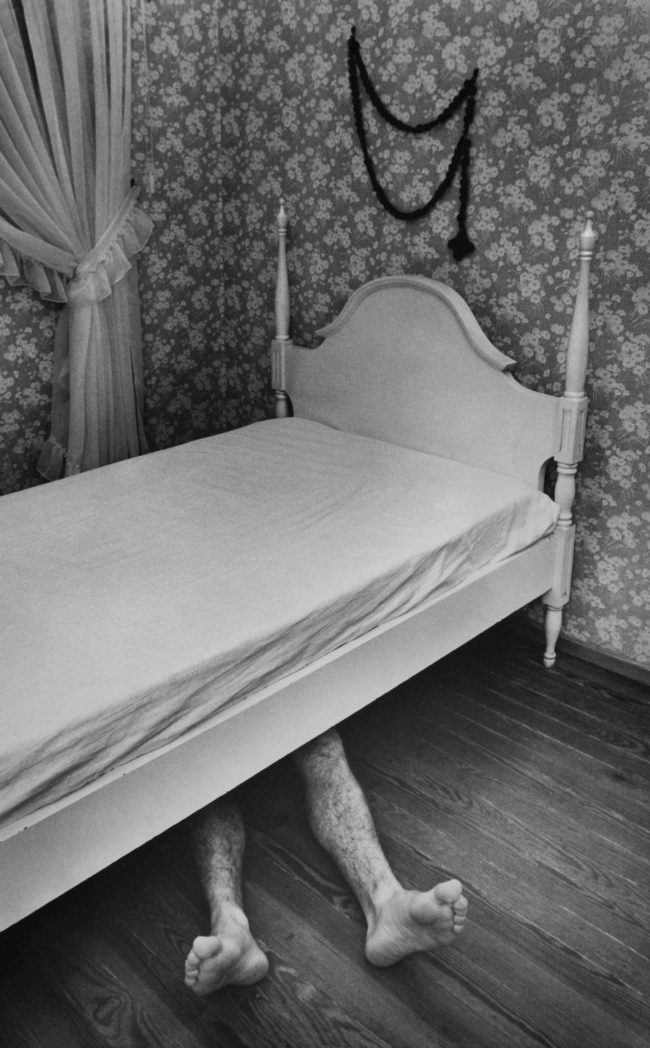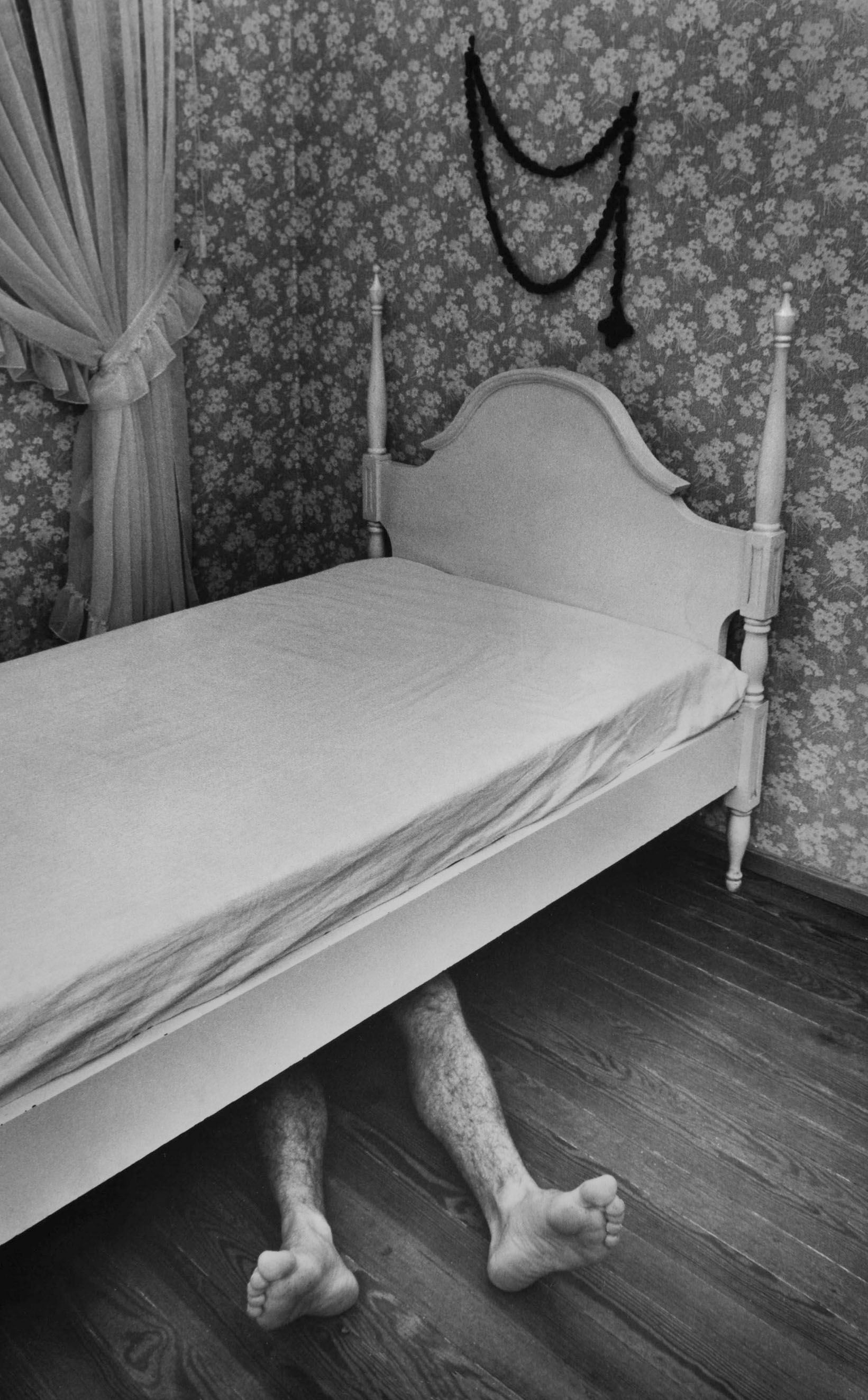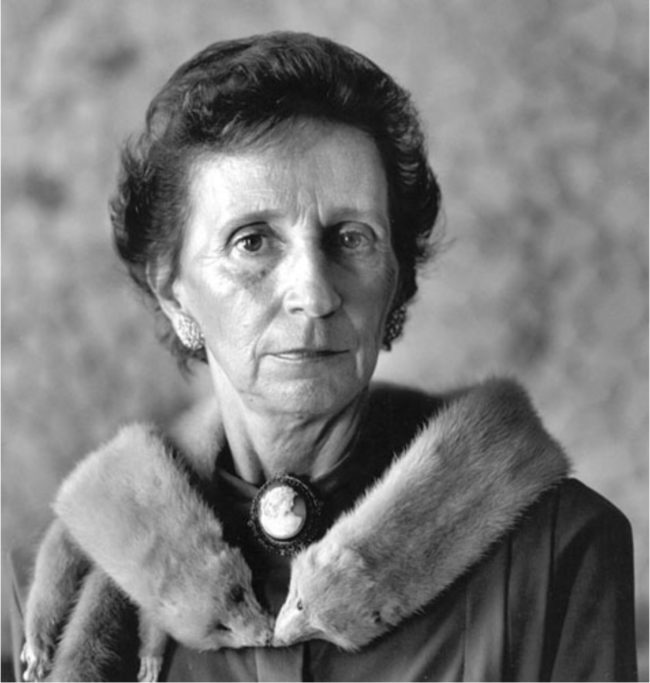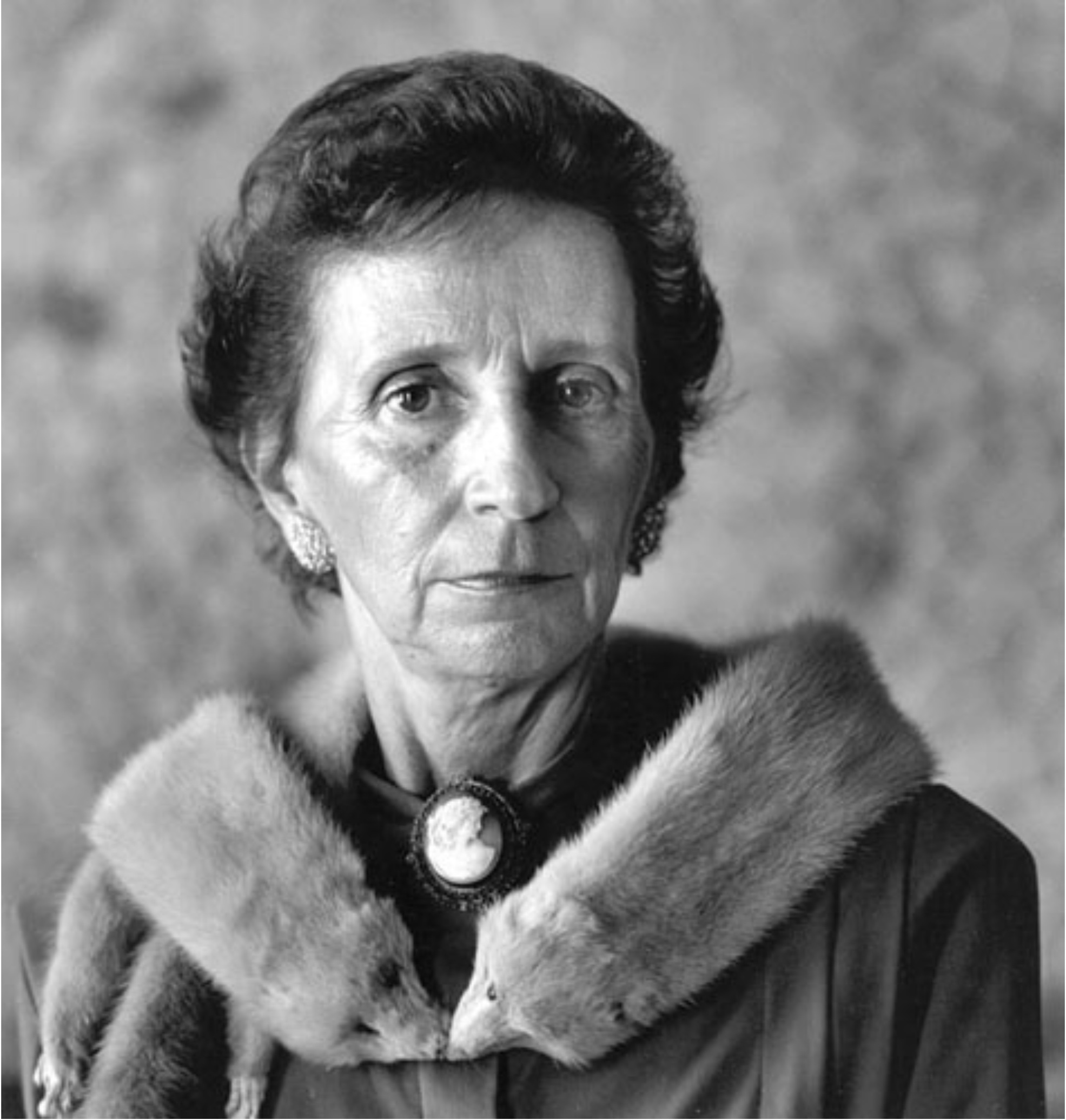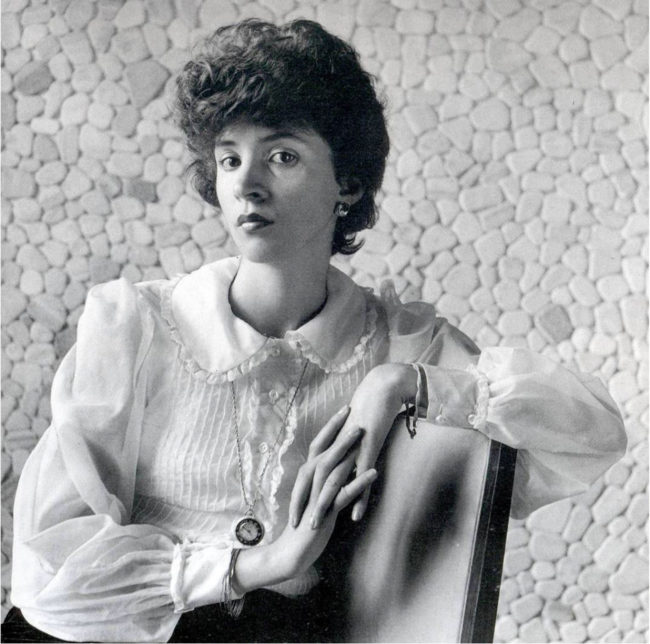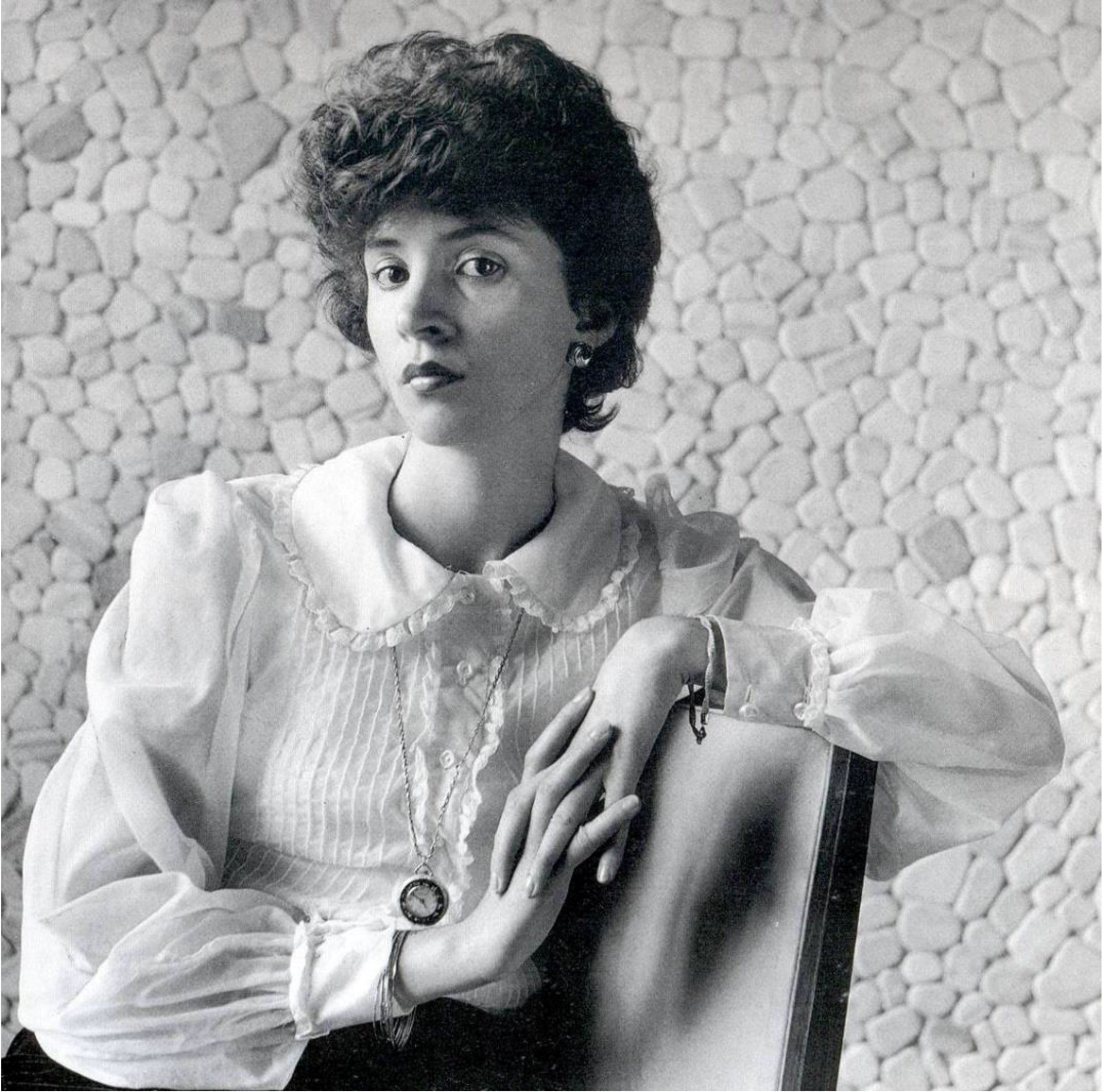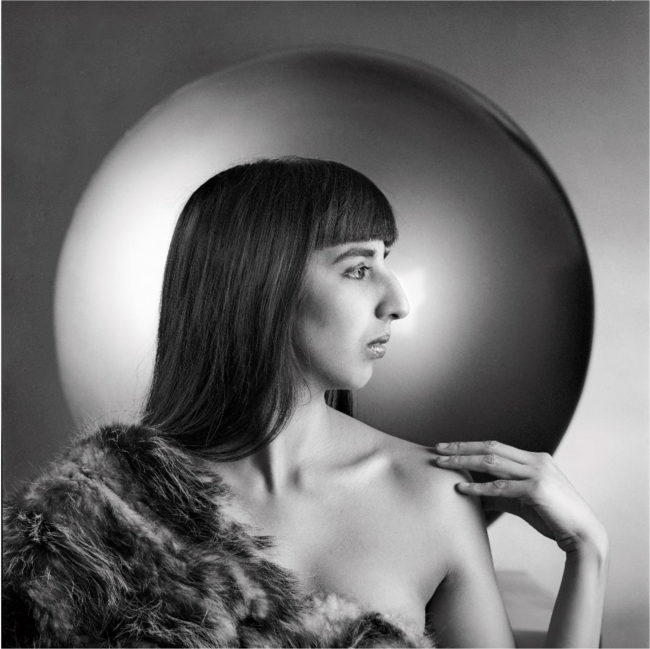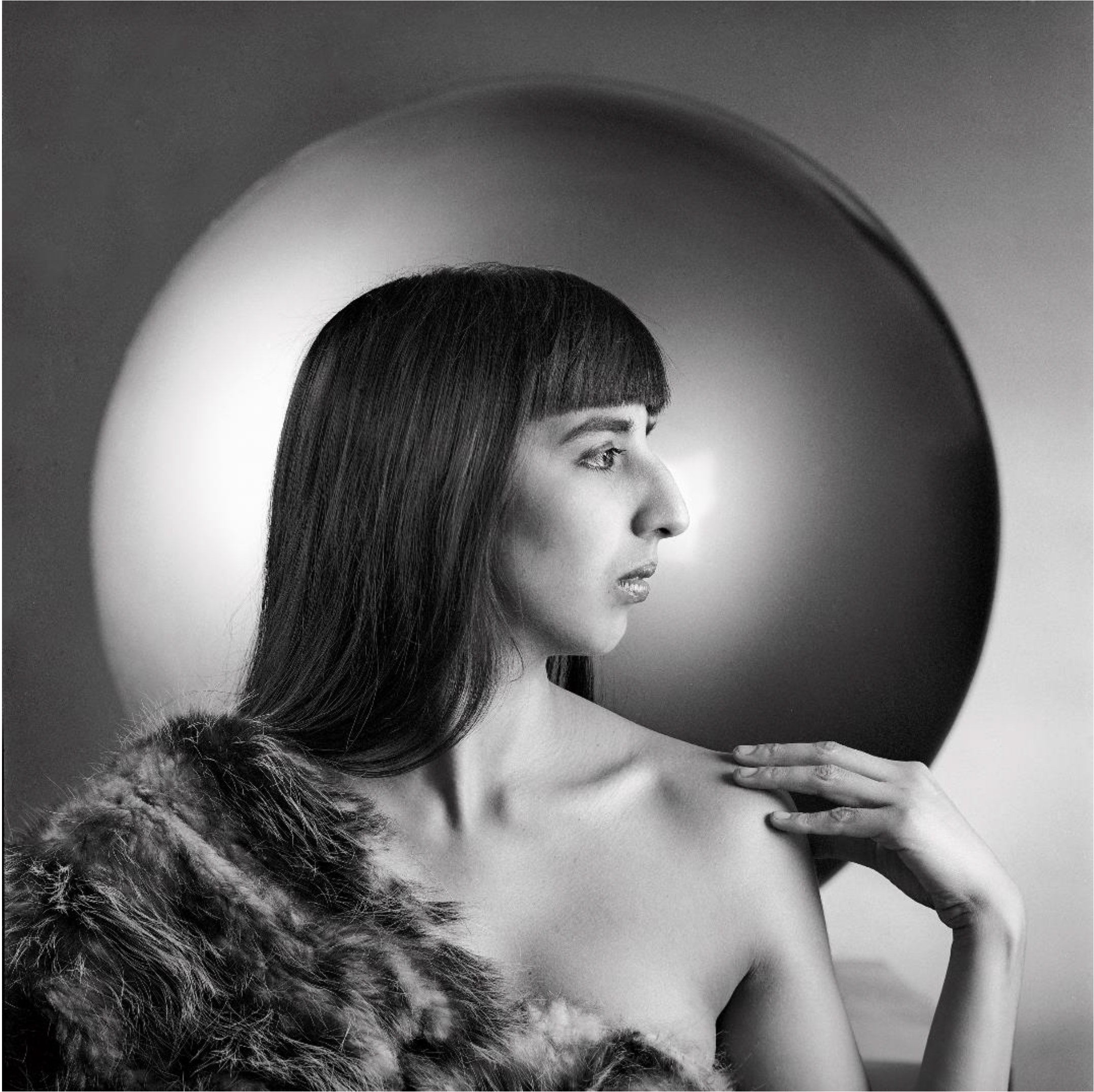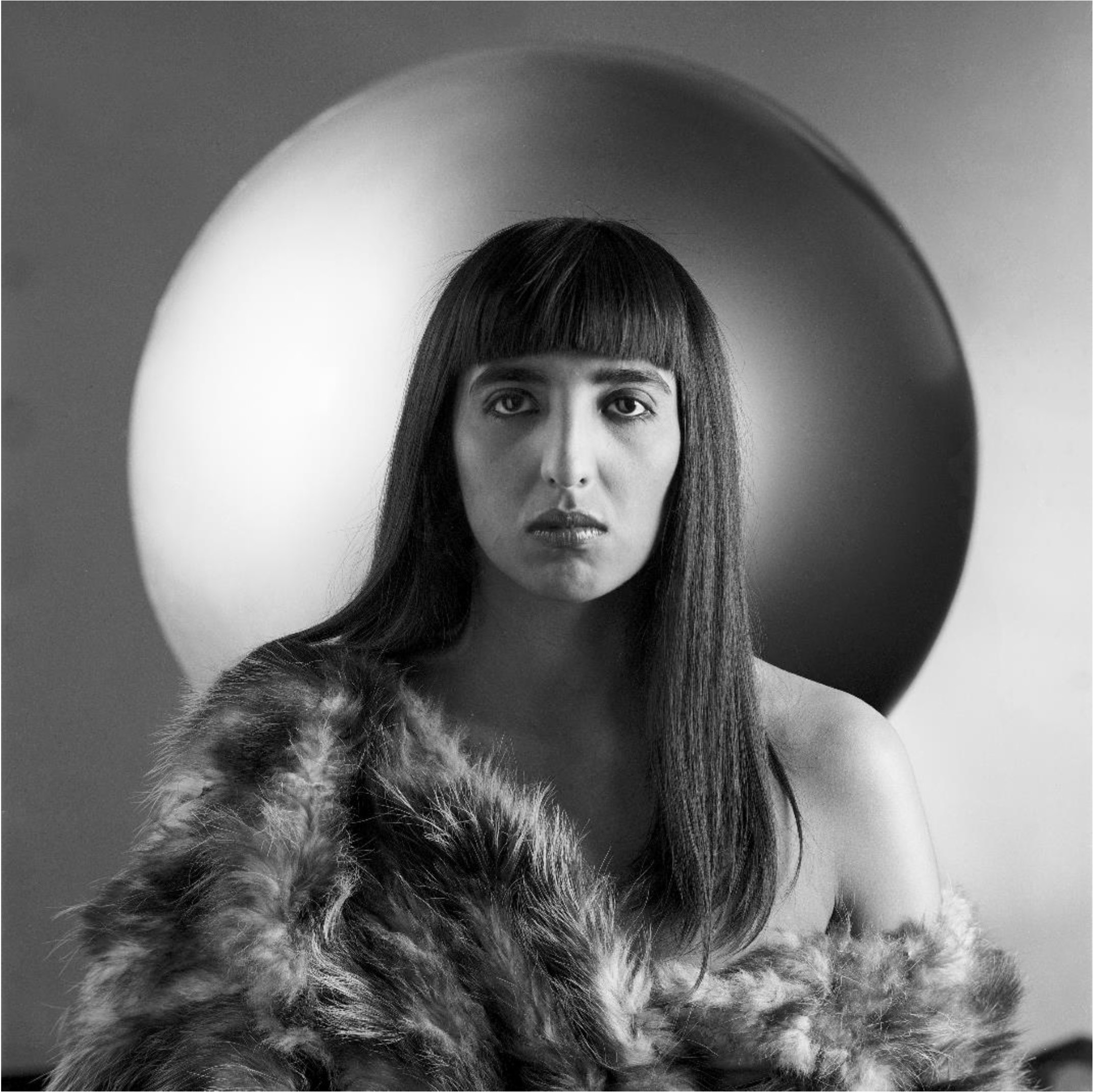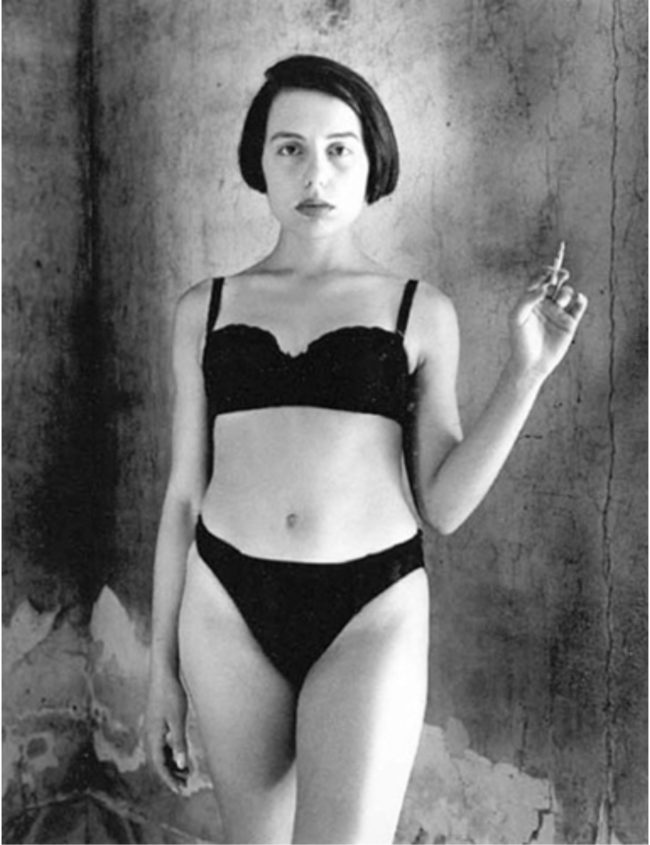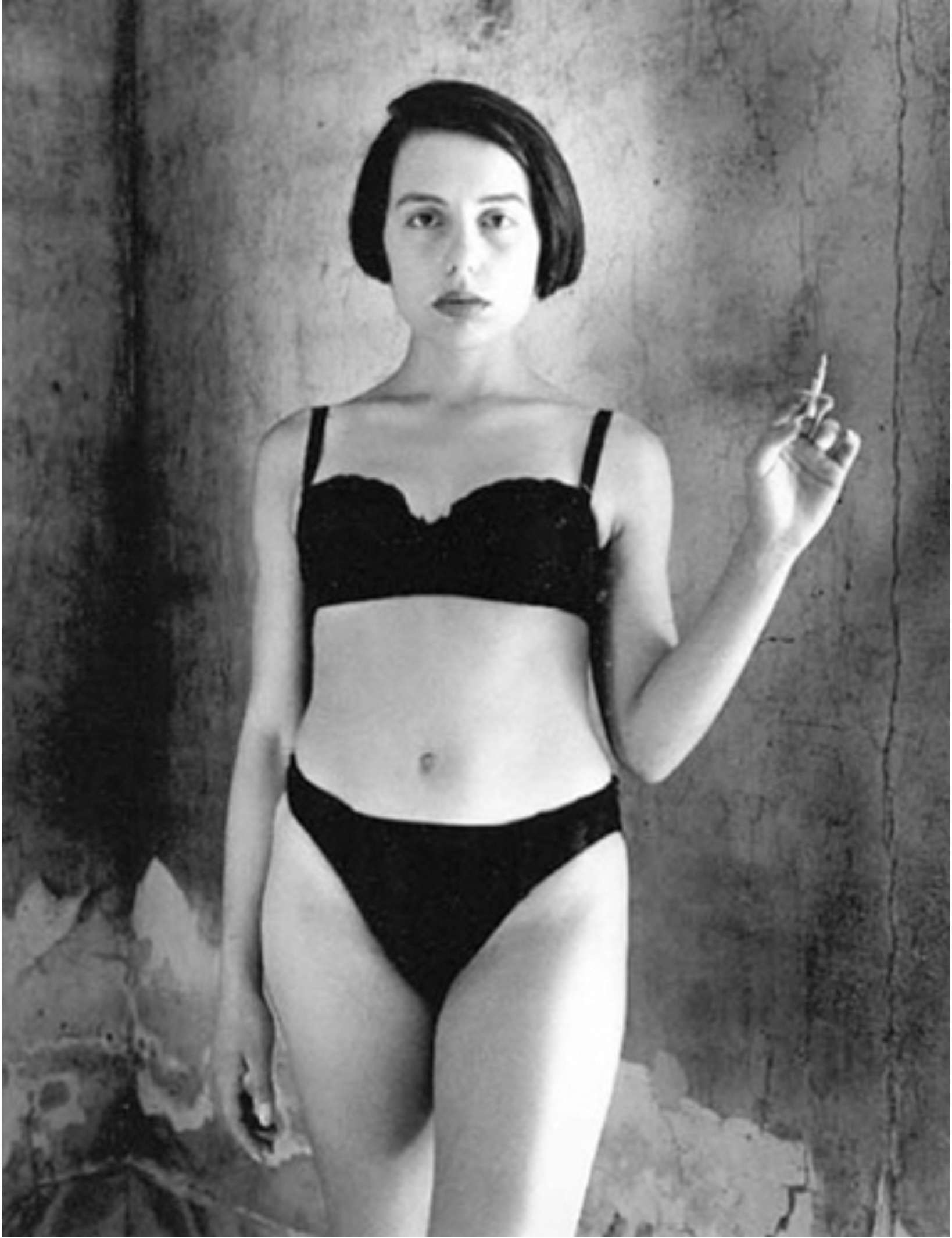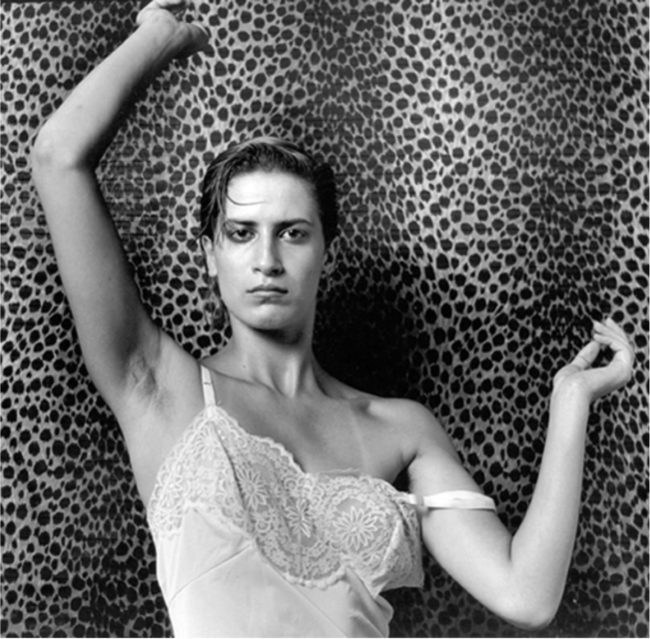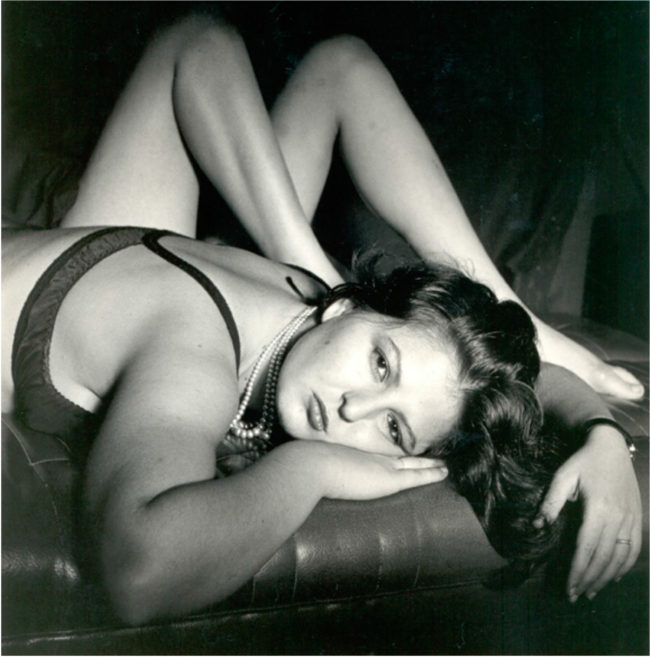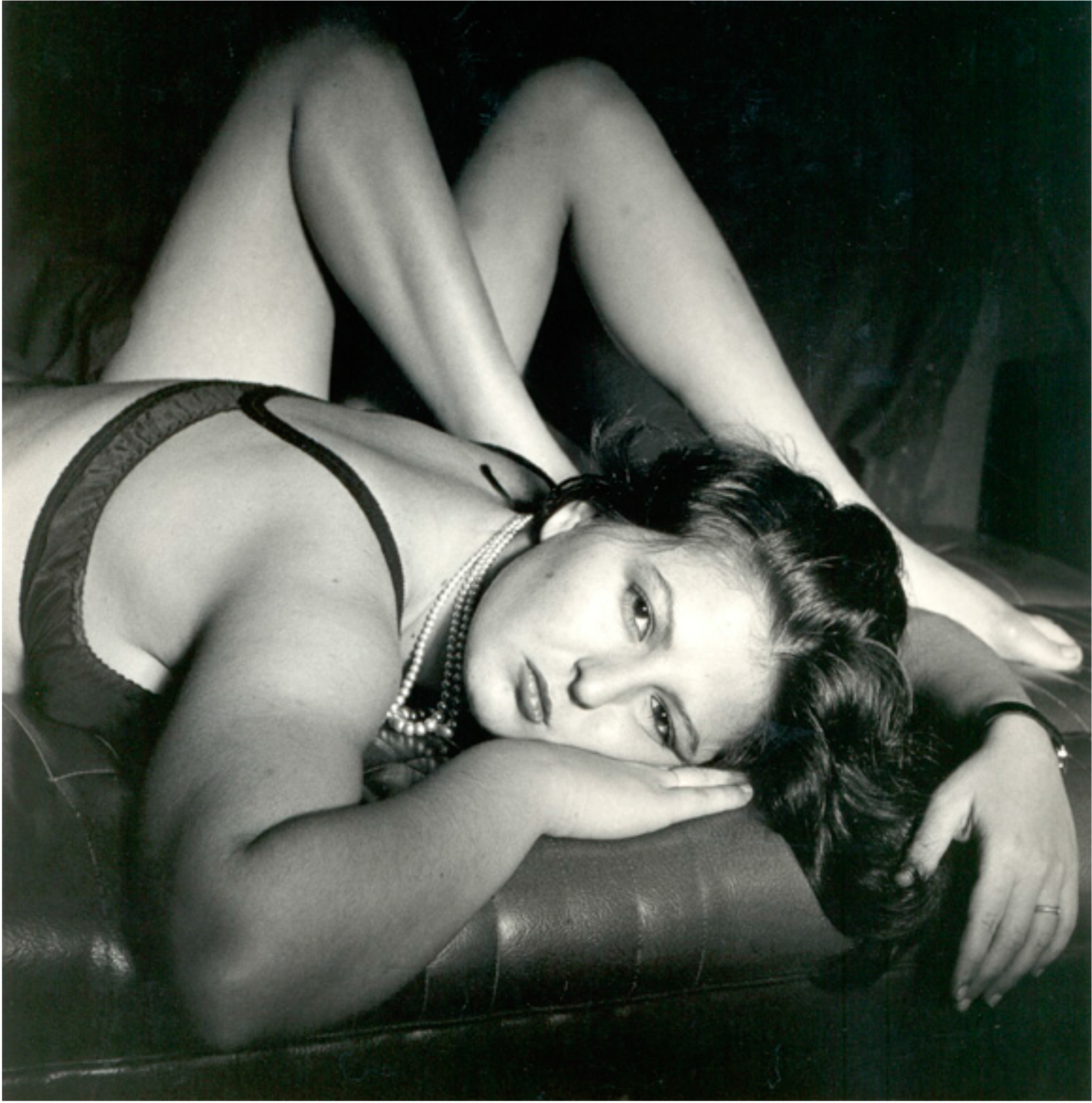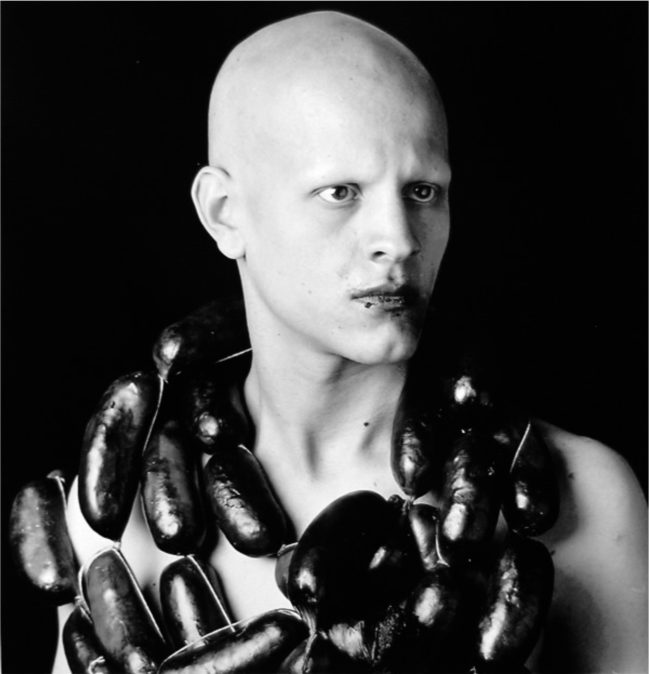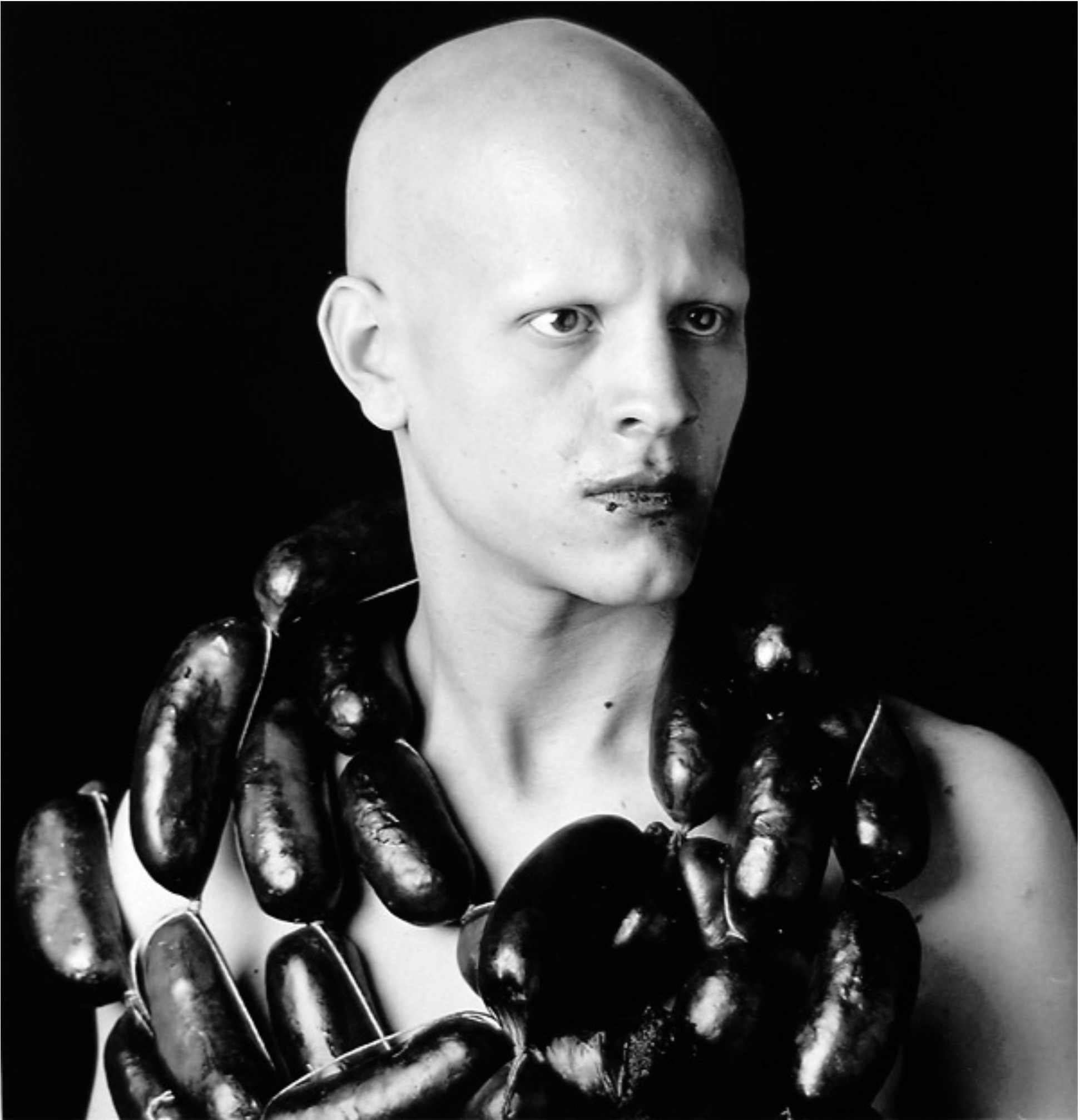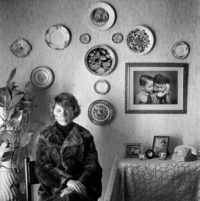
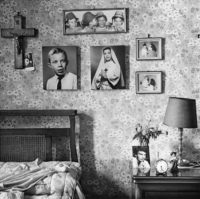



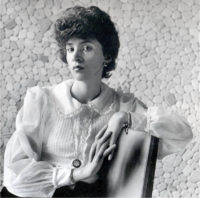


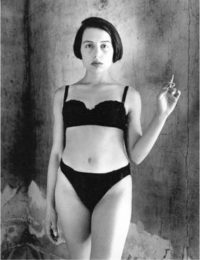


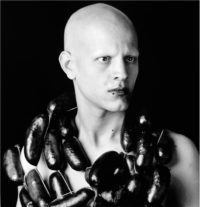

“The little wallpapered room has to do with my parents’ home. Santa Fe. The emotional texture of my youth and what I am. My photographs don’t speak about anything else but melancholy and absence. I tried to cover it with the carnavalesque barroque style of the latin pop, but I couldn’t achieve it. The years go by and each time I identify myself more with the flowered wallpapers, with the prolongued time portraits and window lights…
I can say that I am the texture of the crochet weaves knitted by my aunts. I’m the flowers of the wallpaper. The silent. The repressed desires that this photographs show. The rest, the garish, it’s a fake.”
Marcos López, June 2015.
Marcos López’s inclination for photography began in the mid-70s, in the context of a life in the Argentine provinces atmosphere surrounding that teenage life in Santa Fe – friends, family, gray city streets, community clubs, decorative objects – would become a source of inspiration. This is the world evoked by the black- and-white photographs produced between 1982 and 1992, a world seen from a distance born less of the move to the capital city than of the artistic awareness that that move implied. Two of his earliest images are “Autorretrato” (Self-Portrait) and “Mi Mamá” (My Mom) (1984). With a mix of tribute and humor, these photographs sum up the values that govern the life of a middle-class family in the Argentine provinces. The photographer’s kitsch perspective is clear, but so is his tender delight in the accumulation of decorative objects and symbols that display the decorum and Christian morality of this home. Keen to that singular mix of humor and deference, the mother poses, absolutely serious, before the world she rules, as if unaware of the mask she wears. “I have never been concerned with knowing exactly what magic realism is,” Marcos López would say later. “But perhaps it is when all the participants in a situation are aware of taking part in an absurd act but, out of respect, are careful not to let on.”
In “self-portrait,” the artist appears, but not in person: he is seen in the photos that decorate his mother’s bedroom. In the midst of this domestic horror vacui, the portraits of the children within the image refer to the style of neighborhood photography studios. This gesture in and of itself would suffice to demonstrate the aesthetic consciousness from which Marcos López would develop, over the years, his vision of the local quality of Latin American photography.
The use of black and white mutes the colorful home décor, and in that dissimulation lie the good manners both in relation to the image itself and in relation to the social life in the provinces. Of course, color photography was not, at that time, a real option for a young photographer in López’s context, but his black and white works already suggest the spirit that his famous Pop Latino photographs would radicalize.
In Marcos López’s work the reference to Pop Art is less about art history than about the abasement of local cultures at the margins of the so-called global world. López’s photographs speak of a peripheral culture devastated by the ho- mogenizing whirlpool of late capitalism. This is evi- dent in the piles of objects, in the theatricality of the gestures, in the laden and clashing colors. the “Latin-ness” of López’s work entails an attempt to relativize the aspirations of any regionalist aesthetic. Marcos López’s photography necessarily questions the well-made, so- mewhat sentimental photography of native iconography that the international art system considers paradigmatic of Latin American photographic production.
Marcos López’s documentary allegories effect a unique synthesis between the so-called 1990s style and the tradition in Latin American photography of a committed engagement of social reality. The re- sonances of a long tradition that goes from Mexican Muralism to documentary photography and political cinema run through his work.
In his latest production on posters of great masters of photography such as Ansel Adams, Marcos López, in an appropriationistic gesture, juxtaposes photographic quotes of Latin American artists in a misinterpreted way, operates out of his main profession by painting, a gesture that reveals a feeling of love and pain, a feeling of belonging and rebellion in a visual language in which tribute and humour coexists, two counterposed resources that, by challenging each other, distinguished back then these images of the regional photographic sentimentalism, as they are distinguished nowadays from the intellectual coldness of postmodern irony.
Valeria González (extract from the book Marcos López, Larrivière Editions, year 2010)
“El cuartito empapelado tiene que ver con la casa de mis padres. Santa Fe. La textura emocional de mi juventud y de lo que soy como persona. Mi fotografía no habla de otra cosa que de la melancolía y de la ausencia. Traté de taparlo con el barroco carnavalesco del poplatino pero no lo logré. Pasan los años y cada vez me indentifico mas con los empapapelados floreados, con los retratos hechos en tiempo prolongado y luz de ventana…
Puedo decir que soy la textura de los tejidos de crochet que tejían mis tías. Soy las flores del empapelado. Los silencios. Los deseos reprimidos que muestan estas fotos. El resto, el colorinche, es puro cuento.”
Marcos López, junio 2015.
La vocación fotográfica de Marcos López surge a mediados de los ‘70, en el contexto de una vida provinciana, entre amigos, la familia, las calles grises de su ciudad santafesina, los clubes de barrio y los adornos de la casa, que luego han de convertirse en fuente de inspiración. Ese es el mundo que evocan las fotografías en blanco y negro realizadas entre 1982 y 1992, desde el distanciamiento provisto no tanto por el viaje a la capital como por la conciencia artística que éste implicaba. Dos de las imágenes más tempranas son “Autorretrato” y “Mi mamá” (1984). En ellas, López resume los valores que rigen la vida de una familia de clase media en la provincia, una mezcla de homenaje y de guiño humorístico. Es evidente la perspectiva kitsch de la mirada, pero también el tierno regodeo ante la acumulación de adornos y de símbolos que expresan el decoro y la moral cristiana del hogar. Cómplice de esa singular convivencia de humor y deferencia, la madre posa con absoluta seriedad frente al mundo de su gobierno, como ignorando la máscara que lleva puesta. “Nunca me preocupé por saber qué era el realismo mágico – dirá más tarde Marcos López – pero tal vez sea eso: cuando todas las partes de una situación son conscientes de participar de un acto absurdo teniendo respeto por no delatarlo”.
En el “Autorretrato” el artista aparece, pero no en persona, si no por medio de las fotos que adornan el cuarto materno. En medio del horror vacui doméstico, los retratos de los niños permiten citar, dentro de la imagen, el estilo característico de algún estudio fotográfico de barrio. Solo ese gesto bastaría para demostrar la conciencia estética desde la cual Marcos López va a elaborar, a lo largo de los años, su visión del valor local en la fotografía latinoamericana.
En blanco y negro coloca una sordina sobre el colorido decorado hogareño y en este disimulo coinciden las buenas formas de la imagen y de la vida social provinciana. Por supuesto, que entonces el color no era una posibilidad en el contexto de ese joven fotógrafo pero es cierto que ya aquí está presente el espíritu que el famoso Pop Latino iba a radicalizar.
En la obra de López la referencia al Arte Pop no alude tanto a la historia del arte como al proceso de degradación de las culturas locales en los márgenes del llamado “mundo global”. Sus fotografías aluden a una cultura periférica arrasada por el torrente homogeneizador del capitalismo tardío. Se percibe en las acumulaciones de objetos, en la teatralidad de los gestos, en las claves de color cargadas y disonantes. La latinidad de su propuesta busca entonces relativizar las pretensiones de toda estética regionalista en el panorama de devaluación actual de las culturas periféricas. Su obra implica un cuestionamiento a la fotografía de ejecución correcta, acento sentimental e iconografía autóctona que el sistema del arte internacional ha tipificado como paradigma de la producción latinoamericana.
Las alegorías documentales de Marcos López logran entonces una síntesis única entre el estilo “de los ‘90” y la herencia de la fotografía latinoamericana, en términos de un compromiso con la referencia a la realidad social. En su obra se sienten las reverberaciones de una larga tradición, que abarca desde el muralismo mexicano hasta la fotografía documental pasando por el retrato hasta inclusive el cine de protesta.
En su mas reciente producción sobre pósters de grandes maestros de la fotografía, como Ansel Adams, Marcos López a través de un gesto de apropiacionismo, yuxtapone citas fotográficas de artistas latinoamericanos, mal interpretadas, fuera de su oficio a través de la pintura, en un gesto que revela un sentimiento de amor y dolor, de pertenencia y rebeldía en un lenguaje visual donde convive el homenaje y el humor, dos recursos contrapuestos, que desafiándose mutuamente, distinguieron ayer estas imágenes del sentimentalismo de la fotografía regionalista, como los distinguen hoy de la frialdad intelectual de la ironía posmoderna.
Valeria González (extracto de texto del libro Marcos López, Ediciones Larrivière, año 2010)


